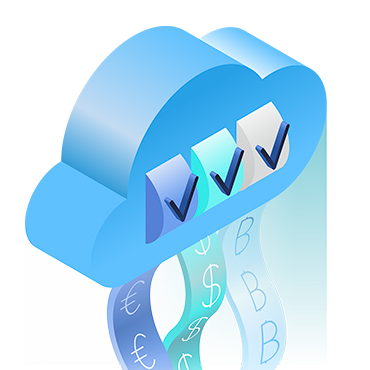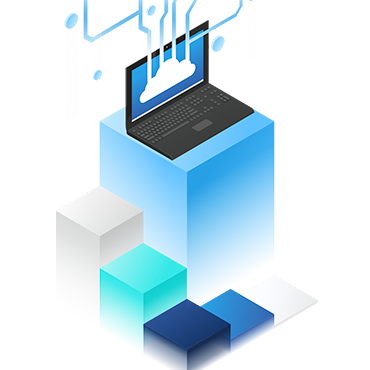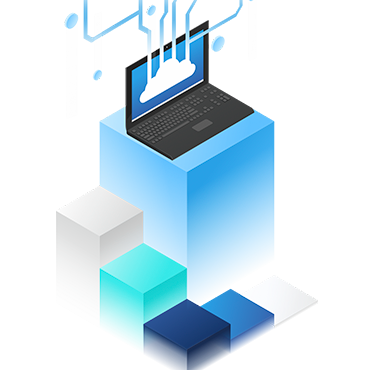10 Biggest EdTech Trends in 2024
Updated 13 Aug 2024
The field of educational technology (EdTech) continues to evolve at a rapid pace, reflecting broader changes in how we approach learning and teaching. As we move into 2024, several key trends are poised to shape the landscape of education. These trends not only highlight the advancements in technology but also underscore the growing emphasis on personalized, data-driven, and immersive learning experiences. Here’s a closer look at the 10 biggest EdTech trends in 2024 that are transforming the way students learn and educators teach.
1. Personalized Learning at Scale
Personalized learning has evolved significantly over the years, and in 2024, it’s reaching unprecedented levels. The integration of advanced algorithms and AI-driven platforms allows for highly customized educational experiences that cater to individual learning styles and needs. EdTech companies are harnessing the power of data to create learning paths that are tailored to each student’s pace, preferences, and performance. This sophisticated approach ensures that every learner receives the right content and resources, fostering a more effective learning environment.
The shift towards personalized learning is driven by the increasing availability of data and improved analytical tools. With real-time insights, educational platforms can adapt their content and delivery methods to better suit each student. This adaptability helps address gaps in knowledge and supports varied learning styles, enhancing overall educational outcomes. As a result, students are more engaged and motivated, as they receive instruction that is relevant to their unique learning needs.
Moreover, personalized learning at scale is transforming the traditional classroom setup. Educators can use these advanced systems to track individual progress and provide targeted support. This not only improves student engagement but also ensures that educational interventions are more precise and effective. By embracing personalized learning, educational institutions are making significant strides in addressing the diverse needs of students, leading to better academic performance and a more inclusive learning environment.
2. AI and Machine Learning Integration
Artificial Intelligence (AI) and Machine Learning (ML) are rapidly becoming central to EdTech platforms. These technologies are revolutionizing the way educational tools function by providing real-time feedback, automating administrative tasks, and supporting adaptive learning systems. For instance, AI-driven chatbots can offer students immediate assistance with their queries, while ML algorithms analyze vast amounts of data to uncover learning patterns and identify areas needing improvement.
AI and ML integration also enhances the learning experience by offering personalized recommendations and adaptive learning paths. By analyzing a student’s interactions and performance, these technologies can adjust the difficulty level and type of content delivered, ensuring that students remain engaged and appropriately challenged. This personalized approach helps students grasp concepts more effectively and improves retention, making learning more efficient and targeted.
Furthermore, the use of AI and ML in education extends to administrative functions, such as grading and scheduling. By automating routine tasks, these technologies free up educators’ time, allowing them to focus more on teaching and supporting students. The integration of AI and ML into EdTech platforms is making learning more interactive and tailored to individual needs, paving the way for more efficient and personalized educational experiences.
3. Virtual and Augmented Reality (VR/AR) in Education
Virtual Reality (VR) and Augmented Reality (AR) are transforming educational content delivery in 2024. These immersive technologies are creating dynamic learning environments that make complex concepts more accessible and engaging. VR can transport students to historical events, distant planets, or simulated scenarios, providing a hands-on experience that enhances understanding and retention of educational material. Similarly, AR overlays digital information onto the real world, enriching interactive learning and making abstract concepts more tangible.
The application of VR and AR in education extends beyond mere visualization. For instance, VR simulations can offer practical experiences in fields like medicine, engineering, and environmental science, allowing students to explore and experiment in a virtual setting. AR can assist in real-time learning by providing contextual information and interactive elements during physical activities or fieldwork. These technologies not only make learning more engaging but also facilitate a deeper understanding of complex topics.
In addition to enhancing student engagement, VR and AR are also fostering collaborative learning. Students can work together in virtual environments, undertake group projects, and explore shared experiences that transcend physical boundaries. By integrating VR and AR into educational settings, educators are offering innovative ways to learn and interact, making education more immersive and effective.
4. Gamification and Interactive Learning
Gamification remains a powerful trend in EdTech, enhancing student engagement and motivation through the incorporation of game elements into educational content. In 2024, platforms are using interactive quizzes, leaderboards, and rewards to create a more stimulating learning environment. These elements not only make learning more enjoyable but also encourage students to actively participate and achieve better results.
Interactive learning tools are designed to foster a sense of competition and accomplishment. By earning points, badges, or other rewards, students are incentivized to complete tasks and improve their performance. This gamified approach helps maintain student interest and encourages consistent effort, which can lead to improved learning outcomes. Gamification also provides immediate feedback, allowing students to track their progress and identify areas for improvement.
The integration of gamification into educational platforms supports deeper learning and retention. Game-based learning experiences often require students to apply knowledge and problem-solving skills in dynamic scenarios, promoting a more comprehensive understanding of the material. As EdTech continues to evolve, gamification will remain a key strategy for enhancing educational experiences and driving student success.
5. Adaptive Learning Technologies
Adaptive learning technologies are becoming increasingly sophisticated, offering more personalized and responsive educational experiences in 2024. These systems leverage data and analytics to tailor content and adjust learning pathways based on a student’s performance and needs. By continuously adapting to individual progress, adaptive learning technologies ensure that students are consistently challenged at the right level, enhancing their understanding and mastery of the subject matter.
The effectiveness of adaptive learning lies in its ability to provide real-time adjustments to educational content. As students engage with the material, the system analyzes their responses and learning patterns to offer customized feedback and recommendations. This personalized approach helps address learning gaps and supports varied learning styles, making education more effective and aligned with each student’s needs.
In addition to enhancing student learning, adaptive learning technologies also support educators by providing valuable insights into student progress. Teachers can use this data to identify areas where students may need additional support and adjust their instructional strategies accordingly. By integrating adaptive learning into educational platforms, institutions can offer more targeted and effective educational experiences, improving outcomes for all learners.
6. Data-Driven Insights for Educators
Data analytics is playing a crucial role in shaping educational strategies and interventions in 2024. EdTech platforms are increasingly harnessing data to provide educators with actionable insights into student performance, engagement, and progress. By analyzing data from various sources, such as assessments, participation metrics, and feedback, educators can make informed decisions and tailor their teaching methods to better support their students.
The use of data-driven insights allows for a more nuanced understanding of student needs and learning behaviors. Educators can identify trends, monitor progress, and pinpoint areas where students may require additional support. This information helps in designing targeted interventions, adjusting instructional approaches, and improving overall educational outcomes. Data analytics also supports the development of personalized learning plans, ensuring that each student receives the appropriate resources and guidance.
Moreover, data-driven insights enable educational institutions to evaluate the effectiveness of their programs and tools. By tracking key performance indicators and analyzing the impact of different teaching strategies, institutions can make evidence-based decisions to enhance their educational offerings. The integration of data analytics into EdTech platforms is transforming how educators approach teaching and learning, leading to more effective and responsive educational environments.
7. Expansion of Online Learning Platforms
Online learning platforms are experiencing significant growth in 2024, offering a broader range of courses and educational resources than ever before. This expansion reflects the increasing demand for flexible and accessible education options. From academic courses to vocational training, these platforms provide opportunities for lifelong learning and professional development, catering to a diverse audience of learners.
The proliferation of online learning tools is driven by advances in technology and changing educational needs. With the rise of remote and hybrid learning models, online platforms are becoming essential for delivering high-quality education to students across different locations. These platforms offer a variety of formats, including video lectures, interactive modules, and virtual classrooms, making education more adaptable and convenient.
As online learning platforms continue to expand, they are also incorporating features that enhance the learning experience. For example, many platforms now offer personalized recommendations, interactive content, and social learning opportunities. By leveraging these tools, students can engage more effectively with the material and collaborate with peers. The growth of online learning platforms is shaping the future of education, making it more accessible, flexible, and tailored to individual needs.
8. Focus on Digital Literacy and Skills
Digital literacy is increasingly recognized as a crucial skill for students of all ages in 2024. As technology continues to advance, educational institutions are incorporating digital literacy into their curricula to ensure that students are equipped with the skills needed to navigate the digital world effectively. This includes understanding online safety, digital communication, and data management.
The emphasis on digital literacy reflects the growing importance of technology in everyday life and the workplace. By teaching students how to use digital tools and resources responsibly, educators are preparing them for success in a technology-driven society. Digital literacy also supports critical thinking and problem-solving skills, as students learn to evaluate and interpret digital information.
Educational institutions are implementing various strategies to promote digital literacy. This includes integrating technology into classroom activities, offering dedicated digital literacy courses, and providing resources for students to develop their skills outside of the classroom. By focusing on digital literacy, educators are helping students build the competencies needed to thrive in an increasingly digital world.
9. Collaborative Learning Tools
Collaborative learning tools are enhancing interactions between students and educators in both virtual and physical classrooms in 2024. These tools, such as shared workspaces, collaborative documents, and video conferencing platforms, facilitate group projects, discussions, and peer-to-peer learning. By enabling real-time collaboration, these technologies foster a sense of community and teamwork among students, regardless of their location.
The use of collaborative learning tools supports a more interactive and inclusive educational environment. Students can work together on projects, share ideas, and provide feedback to their peers, promoting a deeper understanding of the material. Educators can also use these tools to facilitate group activities, conduct virtual meetings, and engage with students in new and innovative ways.
Moreover, collaborative learning tools help bridge the gap between in-person and remote learning. As more institutions adopt hybrid and online learning models, these technologies are essential for maintaining meaningful interactions and collaboration. By integrating collaborative tools into educational platforms, institutions are enhancing the learning experience and creating opportunities for students to connect and collaborate more effectively.
10. Increased Emphasis on Mental Health and Wellbeing
In 2024, there is a growing focus on mental health and wellbeing in education. EdTech companies are developing tools and resources to support students’ emotional and psychological needs, recognizing the critical role that mental health plays in academic success. This includes platforms offering mental health resources, stress management techniques, and mindfulness practices.
The increased emphasis on mental health reflects a broader understanding of the connection between emotional wellbeing and learning. By addressing mental health alongside academic content, educators are helping students achieve a more balanced and holistic educational experience. This approach supports not only academic performance but also overall personal development and resilience.
Educational institutions are also implementing strategies to promote mental health and wellbeing within their communities. This includes providing access to counseling services, incorporating wellness programs into the curriculum, and fostering a supportive and inclusive environment. By prioritizing mental health, educators are creating a more nurturing and effective learning environment that supports the diverse needs of students.
Conclusion
The EdTech trends of 2024 are shaping the future of education by integrating advanced technologies and innovative approaches to learning. From personalized learning and AI integration to VR/AR and data-driven insights, these trends are transforming how students and educators interact with educational content. As the EdTech landscape continues to evolve, staying informed about these trends will help educators, students, and institutions leverage new tools and strategies to enhance learning outcomes and create more engaging educational experiences. Embracing these trends will not only improve educational effectiveness but also prepare students for a future where technology plays a central role in their lives.
At Ostride Labs, we are committed to helping EdTech companies navigate these trends and leverage innovative solutions to enhance their offerings. By providing expert guidance and cutting-edge technology, we support the growth and success of EdTech companies, enabling them to thrive in a rapidly changing educational landscape.



